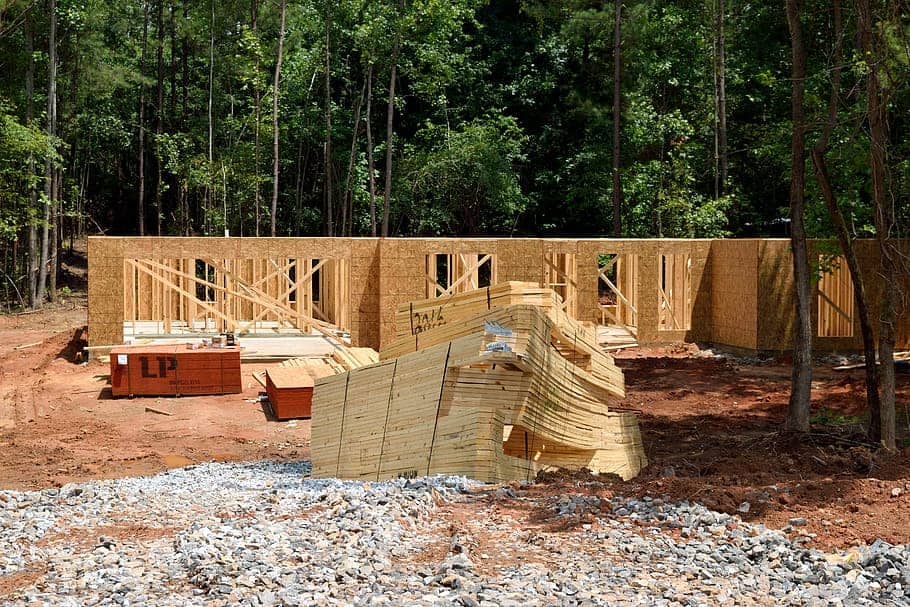In the first few days of living in your cabin, you feel satisfied and happy. But as time goes by, you think something is missing. If you feel this way, maybe all you need is an addition to your cabin. But it’s not that simple.
To start with, you need to search for cabin addition ideas to help you get started with the update. Make sure the addition will not affect the style and the design of your existing cabin. You can do it on your own, or you can hire the right contractors. Below are some log cabin addition ideas and tips that you should keep in mind.
Determine Whether You Are Allowed to Have a Cabin Addition
Before commencing with your cabin additions, you need to determine first if you are allowed to do it or not. If your cabin is situated on the waterfront, you need to know how close you can be on the shore. Ask an expert if your septic system can handle a bigger cabin, or some requirements on your location may restrict the footprint for your cabin. Discuss things with your local building experts before making plans.
Decide to Add Out or Up
You need to decide if you need to extend the cabin upwards or adding space on the main floor. Choosing could not be that easy. Building out is cheaper and easier, but if the terrain is not favorable or there are problems with the main floor, your only option is to build up. An extension on the main floor is like building another house from scratch as it requires a new foundation, walls, and access to the primary parts of the house.
In building the second level, there are factors that you need to think about.
- Consider the building site
- Your budget
- The proposed add on
- The foundation of your existing cabin
- How long it will take to complete the construction
- The workload needed
To help you decide, you can consult an architect, general contractor, or structural engineer before starting with the construction.
Dealing with Consistency
This is a challenge that you need to deal with accordingly. The log you use in your cabin had several years to shrink and settle. If you prefer to use fresh logs and connect them with the old logs, the problem with inconsistency may arise after several years. Trying to predict shrinkage and size logs is not easy because logs are not predictable. Here are tips to help you deal with consistency:
If you add a solid log to a log house, you should set posts where the two meet and connect the logs on the post instead of joining them. By doing this, it will let the new log to respond on its own to shrinkage and settlement. Attaching the old to new log poses risks when the time has come for a new log to shrink and settle.
It is also a challenge to blend the appearance of the present logs with the new logs. Old logs are darker than the new ones. It may be hard to match the stained logs, mainly if the stain darkens over time. To deal with this issue, you can isolate the new construction from the old with other design features minimizing the differences in color or carryout a full log cabin restoration.
Using a log siding over the traditional framing or SIPs (structural insulated panels) is a good solution when dealing with inconsistency. Since log siding contains less moisture as compared to solid logs, the dimension will remain the same, which enhances the possibilities of matching the log joints and is much easier to make a tight seal.
Hire Professionals to Deal with Bearing Walls
If the cabin addition involves bearing walls, you must discuss this with a structural builder or engineer before you start altering a bearing wall. You need to know how essential bearing walls are. These bearing carry most of the weight of your house and should be dealt with carefully to prevent injury to both of you and your home.
The walls outside are always bearing. Examine your basement or crawlspace underneath the wall. If you notice there are posts or walls beneath it, the wall is bearing. You need to check the roof framing as well. Most of the time, the walls that cross at right angles having ceiling joists are bearing.
Taking the window or door out to create access in adding onto a log home is quite simple if you don’t need to widen it. But you need to install a new header after adding temporary supports for the part of the wall affected.
Reinforcement for Tall Ceilings
Adding onto a log home with a cathedral ceiling area is an easy way to extend a floor space. The loft floor can be made of either conventional floor joists or heavy timber covered with sheath and floor. You will need a girder beam with posts underneath.
Those with simple loft floors, the floor joists are supported by joist hangers attached to log walls. Tongue and groove pine flooring are used to cover the beams. The joists may be heavy timbers or dimensional lumber. Consult an expert to determine the exact size of the joists and about the placement of the additional supports.
Prepare the Permits and Other Documents
With careful planning and consultation with the experts, your project will run smoothly and problem-free. You need to prepare all the necessary documents that you need before you start with the project.
Talk with the local building officials concerning the building regulations and requirements. Most likely, you will need to acquire a building permit. There are instances that you also need to obtain specialty permits like plumbing, electrical, foundation, and footings.
Your local building officials might require you to submit structuring drawings and blueprints. Your architect or a registered engineer can do blueprints. You can work on your blueprints and let the architect check it. But we suggest that you hire an expert as he can easily recognize potential pitfalls or problems.
How Much You Can Spend
If you need to borrow money to complete the project, you should discuss it first with a loan officer. Make sure to borrow only the amount that you can pay comfortably, and it should not affect other expenses. Determine how much money you can spend for addition and inform your designer, builder, or your architect. These experts can help you get the most for your money and prevent you from overspending.
Adding onto a log home is not cheap at all. You need to finalize on what you would like to complete with the addition. To get an idea of what is possible, you can check out scour magazines, online sources, and home shows, and if you know someone expert on this, you ask them. Make a list of your dream items and the must-haves for the add on, then look for the best designer, builder, or architect before you continue with the project.
Final Thoughts
If you need a bigger cabin, there is no need to move out of your cabin. Adding an extension to create more space to meet your needs is neither easy nor cheap projects, but it is gratifying, compared to buying a new cabin.
It is best to consider replacing windows or roofs in the old area to make sure your addition will blend perfectly for the rest of the cabin. This will match the newly painted or stained exteriors, or reworked landscape.
Before commencing with the cabin addition, make sure that you have given it a lot of thought. Focus on the things that you need to consider — keeping these things in mind to prevent cost overruns and frustration at the end of the project.
My name is Eugene Thornhill. I'm an outdoor enthusiast who loves nothing more than being one with nature. I've lived in numerous outdoor homes and even constructed my own. Living off-grid is something I'm very familiar with, more so than living in the city. For many years I've dealt with the many problems of living off-grid. It's time to pass on my knowledge through Cabinguides.


